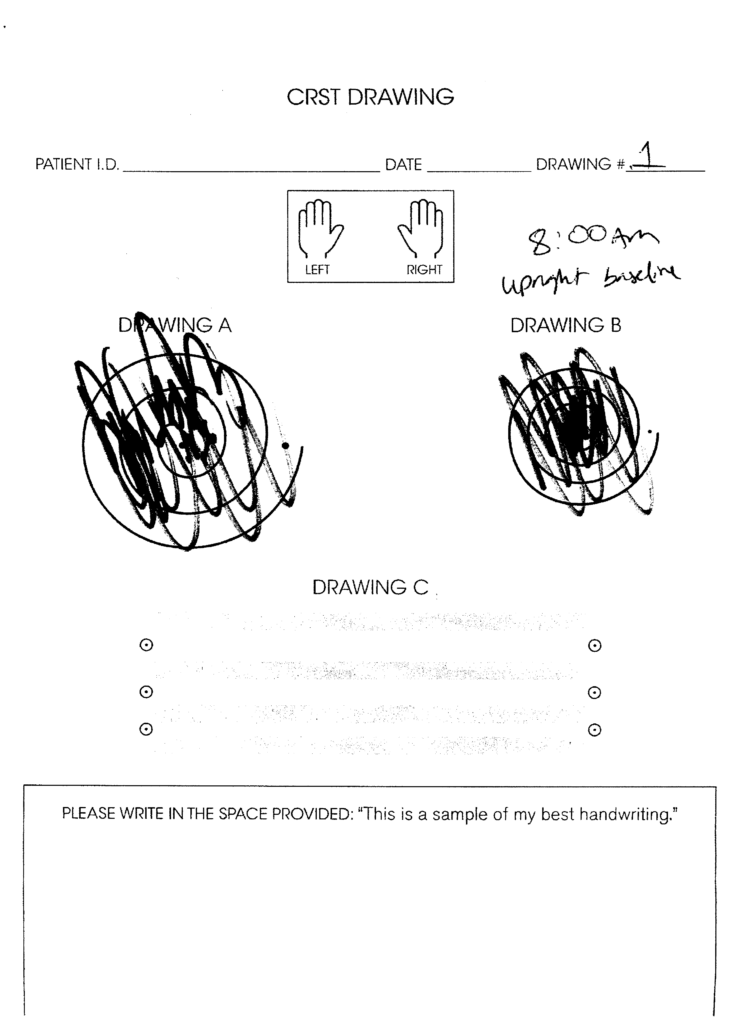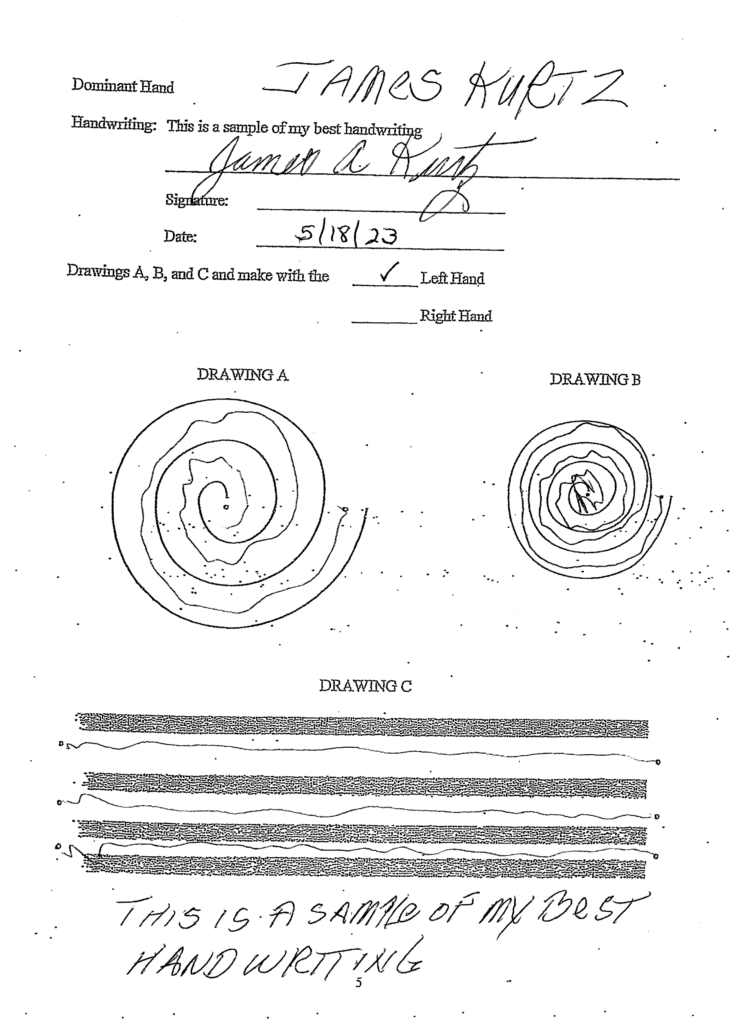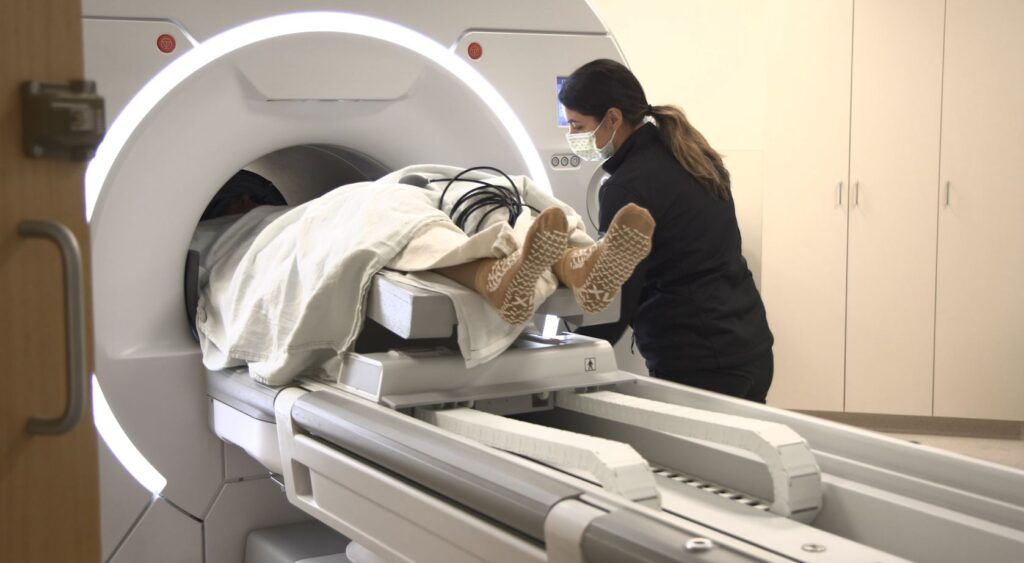
Barrow Surgeon Treats Essential Tremor with Focused Ultrasound
After more than a decade of living with a neurological disorder that causes involuntary and rhythmic shaking, an Arizona man has been relieved of his symptoms thanks to a new, noninvasive treatment offered at Barrow Neurological Institute. After undergoing treatment to stop tremors in his dominant hand, Jim Kurtz, 78, has regained full use of his hand and a greater sense of control over his life.
Barrow Neurological Institute neurosurgeon Francisco Ponce, MD, is the only doctor in Arizona to treat essential tremor (ET), the condition affecting Kurtz, through focused ultrasound – a technique using MRI guidance to deliver beams of ultrasound energy accurately onto a precise target deep in the brain without damaging surrounding normal tissue.
“Patients are amazed at the results. Many are in tears with how immediate and impressive the effect is,” Dr. Ponce says.
ET is the most common movement disorder affecting approximately 10 million people in the U.S. It is a neurological condition not related to Parkinson’s disease that causes involuntary and rhythmic shaking. While it’s generally viewed as a nonthreatening disease, the impacts of ET on everyday life can be disabling, impairing patients’ ability to eat, drink, shave, and write, as well as perform hobbies, housework, and workplace tasks.
“I was at a breakfast meeting with a room full of clients and coworkers when I first noticed the shake. That was 12 years ago,” says Kurtz, an Arizona State University alumnus who worked many years as a sales manager for a company headquartered in Phoenix. “I remember it so vividly. I had poured a cup of coffee, and when I went to lift it, my left hand started to shake so much that I completely emptied the cup.”

Over time, Kurtz tremor grew worse and medication only reduced some of the shaking. He lost the ability to type on a keyboard and write with his left hand.
“One day, I just decided to try calling Barrow because I knew of their great reputation,” says Kurtz.
After evaluation by movement disorder neurologist Justine Chan, MD, at Barrow’s Muhammad Ali Parkinson Center in 2020, Kurtz learned he might be a candidate for deep brain stimulation (DBS), another innovative treatment used for various neurological conditions such as ET and Parkinson’s.
“DBS seemed too scary for me and my wife, Diane, at the time,” Kurtz recalls. “I know it works wonders and can be a miracle for some patients, but it just wasn’t something I was ready for.”
So, Kurtz lived with the tremor until recently. He read an article about a new technique using ultrasound technology and was immediately intrigued. It turned out, Barrow had started offering the procedure and Kurtz was a candidate.
“When I met with Dr. Ponce, everything he said made sense,” says Kurtz. “The procedure is irreversible, and that was a little scary, so I went home and did a lot of research. I told Diane I needed to do this, and that was that. I had a lot of faith in Barrow and Dr. Ponce.”

Kurtz underwent the groundbreaking procedure in March. Requiring an incredible amount of precision, the procedure can take three to four hours. Patients lie in an MRI tube, which guides where Dr. Ponce directs each set of ultrasound beams. Doctors use a spiral test before, during, and after the procedure to illustrate effectiveness.
“When we were only about three-quarters of the way through, I could write with my left hand again. The tremor was almost gone,” he says. “By the end, my tremor was completely gone. I hadn’t been able to clearly follow a spiral with a pen like that in more than 10 years!”
Kurtz, who now resides in Strawberry, Arizona, says he missed the small things that really were big moments in his life, like carrying a hot cup of coffee in each hand to meet his wife of 23 years for their daily coffee date.
“Every morning since we both retired, we sit together and read the news while drinking coffee. For the first time in almost a dozen years, I can carry two cups at once. I don’t have to make two trips, or send her to get her own cup,” Kurtz adds. “I hope everyone who has ET learns about this option and gives it consideration. It’s truly changed my life.”
Although focused ultrasound was first approved by the U.S Food and Drug Administration (FDA) to treat essential tremor in 2016, the noninvasive, therapeutic technology was not approved by Medicare in all U.S. states until July 2020. Dr. Ponce, a world leader in DBS surgeries, performed Arizona’s first procedure for a patient with essential tremor at Barrow in October 2022.

In the News
- Yahoo! News: Phoenix hospital treating ‘essential tremor’
- KTAR News 92.3 FM: Arizona man’s involuntary rhythmic shaking ends after focused ultrasound treatment at Barrow
- Fox 10 Phoenix: Phoenix hospital treating ‘essential tremor’

